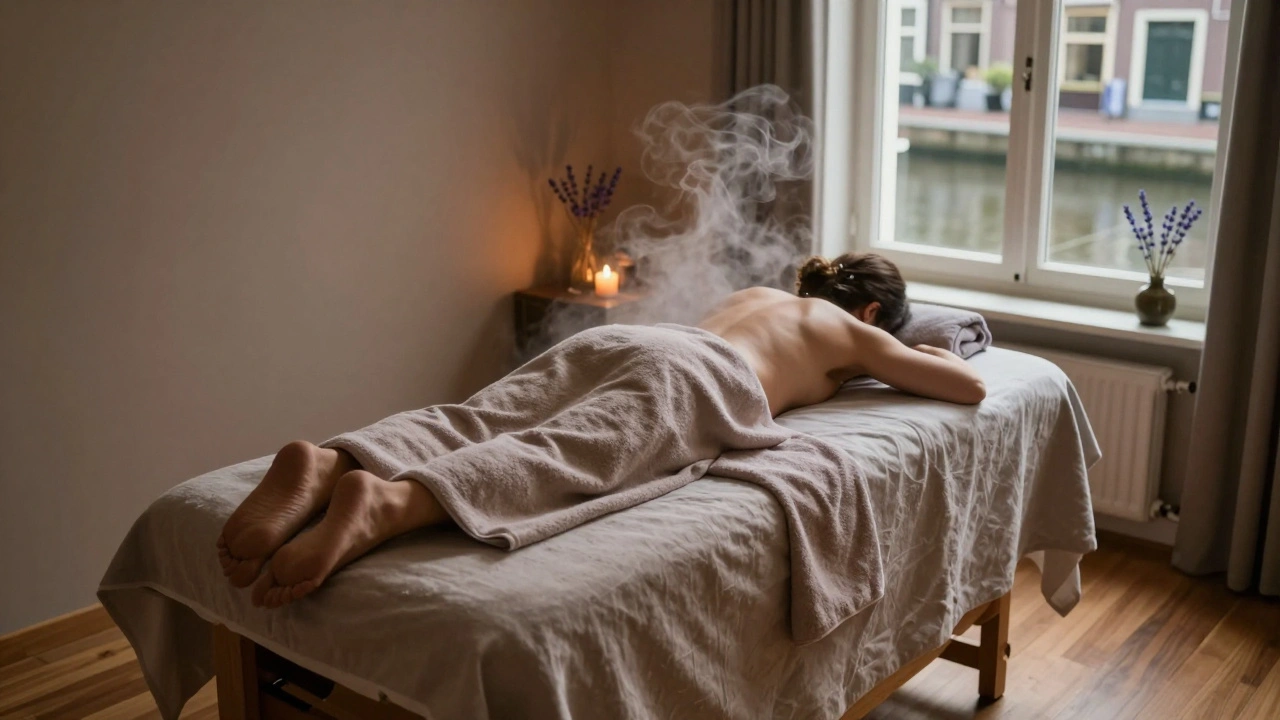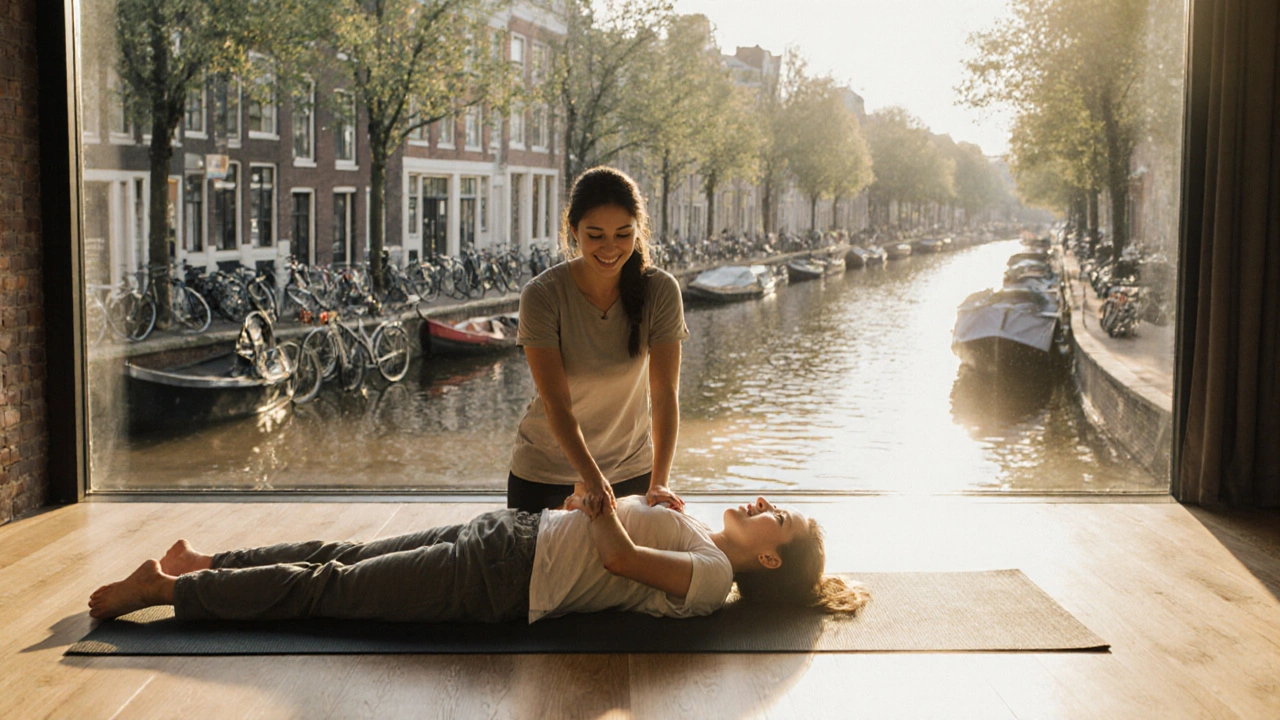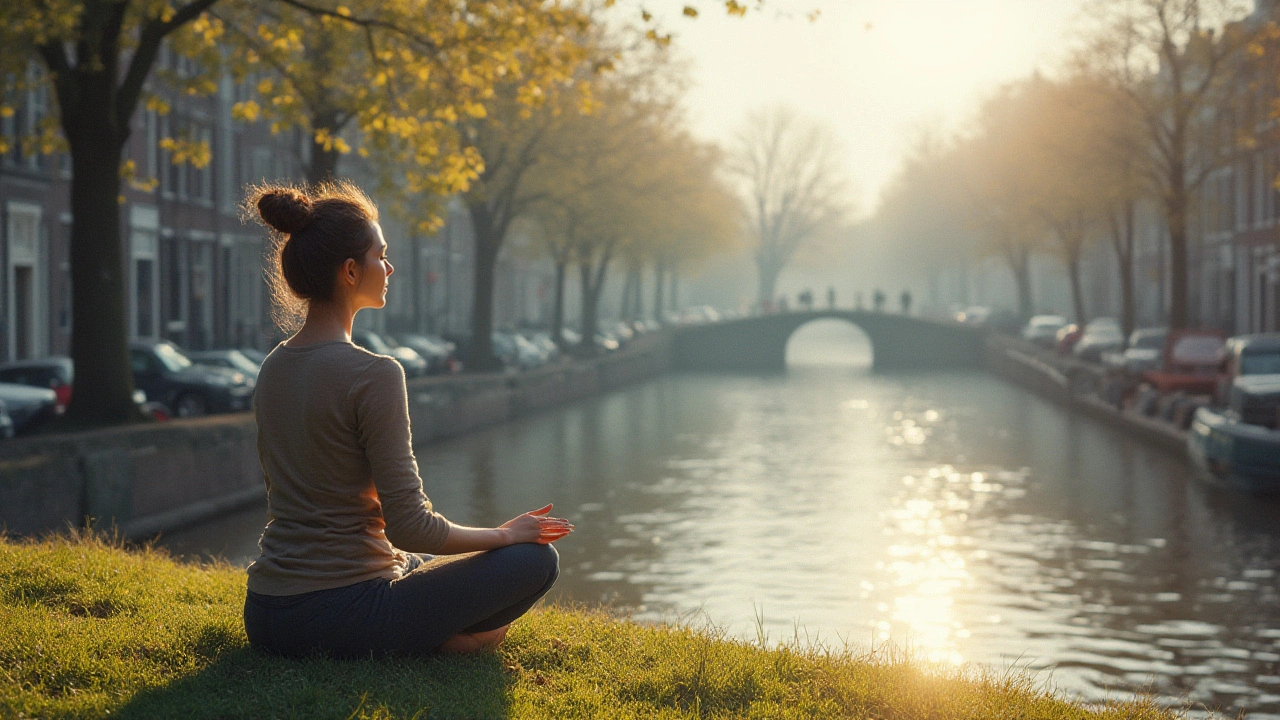Tuina Massage Amsterdam: Relieve Pain and Boost Wellness Naturally
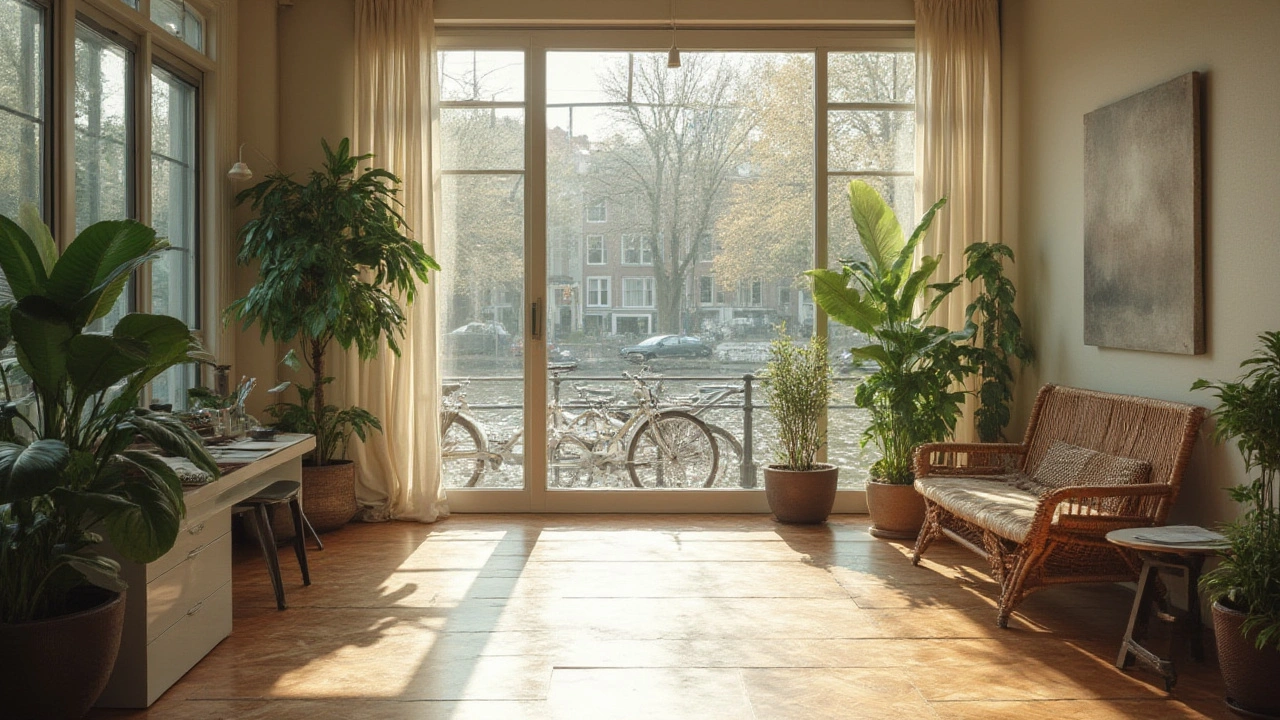
Ever walked out of a massage studio feeling like your body just hit the reset button? That's what Tuina massage is gunning for: a real change, not just a fleeting moment of relaxation. People in Amsterdam are catching on. Stressed desk warriors, cyclists with creaky knees, and everyone in between are booking Tuina sessions hoping for something deeper than your standard back rub. Ask around, and you’ll hear some wild stories – like the runner who ditched their painkillers after a few appointments, or the overworked parent who swears Tuina gave them their groove back.
Key Points
- Tuina massage is a traditional Chinese bodywork method focused on pain relief and restoring energy balance.
- In Amsterdam, trained Tuina therapists offer sessions that can target back pain, neck tension, headaches, and postural stress.
- Unlike Western massage styles, Tuina uses dynamic hand techniques, pressure points, and muscle mobilization.
- Sessions often blend ancient wisdom and science, helping with physical pain and boosting energy and mood.
- Pricing in Amsterdam varies, but expect transparent booking processes and sessions tailored to your needs.
- Prioritize safety: always choose licensed practitioners and communicate clearly about your trouble spots and health concerns.
Direct Answer – What is Tuina Massage and How Can It Help with Pain?
Tuina massage is a hands-on therapy from traditional Chinese medicine that targets pain, muscle tension, and energy blockage. Practitioners use rhythmic kneading, pressing, rolling, and stretching to clear out knots and restore balance. If you’re struggling with chronic back strain, stiff necks (thanks, laptops), or sports injuries, Tuina zeroes in like a laser. Instead of just kneading sore muscles, it also works on energy flow – or "Qi" as they call it – aiming to fix the root cause, not just symptoms. Sessions aren't one-size-fits-all: your Tuina therapist will tweak pressures and techniques to suit what your body needs. The method blends muscle work with acupressure, and you might even keep your clothes on (loose cotton works best). Three to five sessions can make a difference with stubborn pain, though many people start feeling lighter even after their first try.
Comprehensive Guide to Tuina Massage in Amsterdam
Let’s be real – Amsterdam has a thing for holistic wellness. You see yoga studios squeezed next to specialty coffee shops, acupuncture clinics above bike repair stores, and, lately, a lot more buzz around Chinese therapeutic massage, especially Tuina. The word “Tuina” (pronounced "twee-nah") literally means "push and grasp" in Mandarin. But what does that mean for your back, your mood, and that nagging tension? Tuina dates back to the Ming dynasty (we’re talking 14th century stuff!) and stands as one of China's oldest bodywork therapies. Here, unlike spa massages that just chase comfort, the goal is health – real, measurable relief.
You’ll notice Tuina clinics usually skip the incense and Zen playlists and head straight for the pain points. Therapists in Amsterdam tend to be trained in both Eastern and Western anatomy, blending the rigor of medical training with ancient methods. They watch how you walk, ask about your sleep, poke around your trigger points, and sometimes even recommend stretches or Chinese herbal remedies. Some call it “physiotherapy’s wise grandparent,” and that's pretty spot-on. If you think this is just another spa trend – think again: Dutch health insurers actually include Tuina in some complementary care reimbursements. That says a lot.
The science has started catching up too. Studies published by journals like the European Journal of Integrative Medicine show Tuina's solid results for stiff backs, tension headaches, and neck pain. Therapists in Amsterdam often work with athletes, cyclists, and office workers who find other methods haven't delivered lasting relief. Whether your pain feels sharp, dull, or just annoyingly stubborn, Tuina might deserve a spot in your self-care toolkit.
Definition and Context: How Tuina Massage Works
No crystal balls here – traditional Chinese medicine (TCM) sounds mystical, but Tuina relies on anatomy, pressure, and movement. So, how does it actually work? Think of your body like a series of rivers (the meridians), carrying both energy and blood. A Tuina therapist is like an expert navigator, fixing blockages, easing muscle knots, and nudging everything back into a steady flow. They use palms, fingertips, knuckles, and sometimes their elbow for deeper spots. Some even use gentle joint manipulation if you’ve got a sticky shoulder or hip. Sound intense? It can be – but you control the pressure.
The focus points are way more scientific than you might expect. Therapists study anatomical maps and meridian charts, and in Holland, most are required to stay up-to-date with medical safety and hygiene standards. It isn’t a cookie-cutter treatment. Got tension headaches from endless Zoom calls at home? They'll likely work on your neck, shoulders, and maybe even your scalp or upper back (forget that gooey face mask – the scalp touch is where the magic happens). Lower back pain from cycling the city every day? Expect kneading and pressing around your lumbar muscles and hips, maybe combined with hip stretches.
Don’t be surprised if your therapist asks about your digestion or sleep. In traditional Chinese medicine, everything’s connected. Chronic stress or poor sleep can show up as back stiffness or jaw clenching. Tuina approaches pain as a symptom woven into your bigger health story. Good therapists can spot if your fatigue matches up with specific meridian disruptions and use their hands to help rebalance you.
Benefits of Tuina Massage: Real Stories and Surprising Gains
So why do Amsterdam locals keep coming back for Tuina, even with all the other massage options? Because for many, it works when nothing else has. A 38-year-old graphic designer struggled for months with migraines until her acupuncturist suggested Tuina. Within four sessions, her headaches dialed down to rare blips instead of weekly nightmares. There’s the marathon runner who knocked two minutes off their 10K time, crediting Tuina for easing hip pain. Even parents chasing kids across Vondelpark share how regular sessions help them sleep deeper and move easier. It’s not all dramatic – sometimes it’s simple: a better range of motion, less tension, or just a few days without nagging aches.
The full benefits list is surprisingly long:
- Reduces chronic pain (back, neck, shoulders)
- Improves blood circulation for quicker muscle recovery
- Boosts energy levels – that mid-afternoon slump feels lighter
- Helps manage headaches and migraines
- Assists with sleep and lowers general stress levels
- Supports post-injury recovery by improving flexibility
- Some even report benefits for issues like digestion and menstrual pain
Your therapist will offer tips for at-home care too: stretches, simple acupressure points, or even breathing exercises. And when you commit to a short course of sessions, the results usually amplify. It really comes down to consistency and communication between you and your practitioner.
Types of Tuina Massage Available in Amsterdam
The Tuina scene in Amsterdam has exploded over the last couple of years. You'll find therapy hubs focused on pain relief and sports recovery, as well as holistic centers combining traditional Chinese medicine with Tuina. Here are a few variations you’ll spot on local booking sites:
- Classic Tuina Massage: The all-rounder, tackling pain, stiffness, and energy blockages. Expect deep pressure and rhythmic movements.
- Pediatric Tuina: Specially adapted for babies and children – helps with colic, sleep, and even growing pains. Practitioners use super gentle, safe techniques.
- Sports Tuina: Tailored for athletes, this focuses on recovery, flexibility, and quick healing after strains or heavy workouts.
- Focus-area Tuina: Some therapists offer back-only or neck-only sessions, ideal if you have one area that needs urgent attention.
- Combination Treatments: These fuse Tuina with acupuncture or cupping, which can turbocharge results for complex pain patterns.
Check therapist bios and reviews – lots list their specialties (like migraines, pregnancy, or sciatica). The Dutch Association for Traditional Chinese Medicine (NVTCG Zhong) keeps an updated listing of credentialed professionals, making it easy to find exactly what fits your needs.
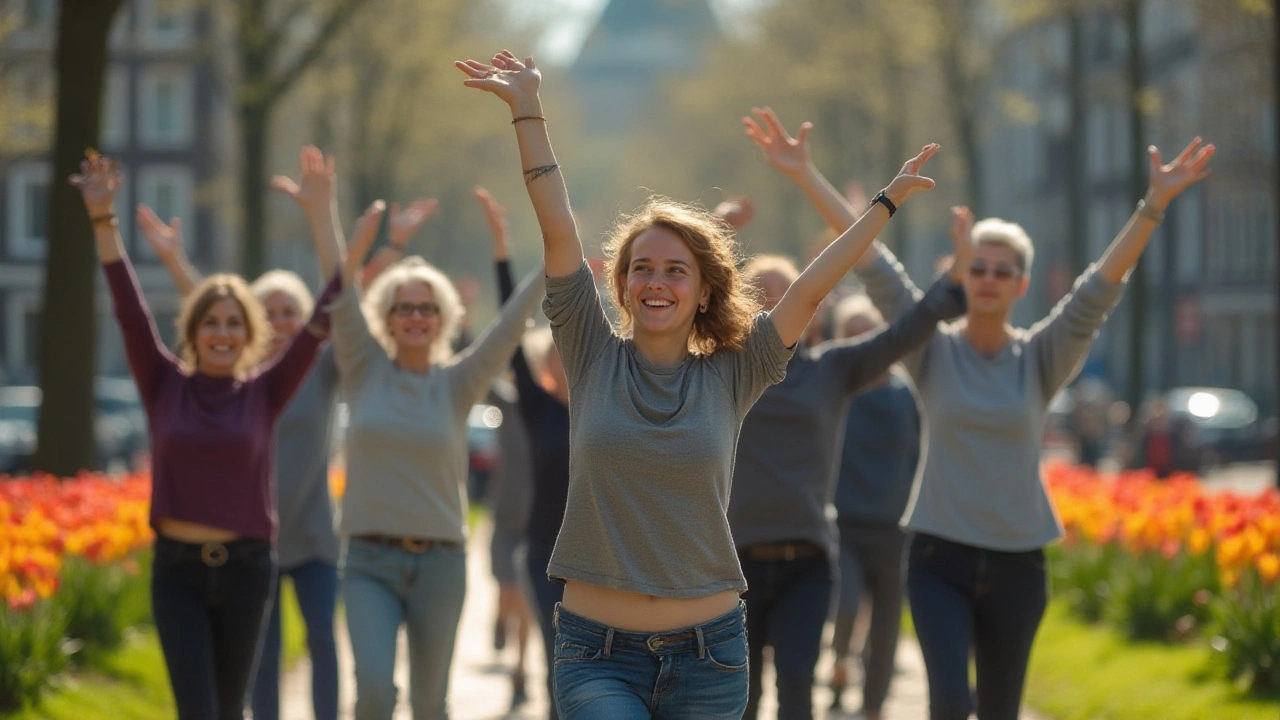
How to Find Tuina Massage Services in Amsterdam
Ready to try Tuina? Amsterdam’s city center has plenty of reputable clinics, and you’ll also find options in De Pijp, Oud-West, and leafy Zuid. Think about what you want from the experience: pain relief, sports recovery, or just a heavy-duty recharge? Look at Google reviews for honest takes. Many Tuina therapists in Amsterdam list their services on sites like Treatwell, or on official TCM association directories (the NVTCG Zhong website is a good place to start).
Ask questions before booking. Is the therapist certified? Do they have experience with your specific problem (like frozen shoulder, or post-injury recovery)? Do clinics use clean linens and follow up-to-date hygiene practices? Double-check if there are language barriers – but you’ll find most speak fluent Dutch and English.
Want a local touch? Some practitioners set up shop near landmarks like Vondelpark, the Jordaan, or around Leidseplein, so you can combine your session with a stroll or coffee afterwards. If you use health insurance with alternative coverage, ask if the clinic can provide reimbursement receipts. Many can.
If you’re mapping your route, most clinics are an easy bike trip (this is Amsterdam, after all). Trams 7 and 3 pass by several well-known holistic centers. Some clinics offer late evening or weekend slots, so you can schedule after work or in between errands. Digital-savvy? Many therapists have instant booking with real-time calendar updates and waiting list alerts. Bonus: Look out for clinics that offer trial sessions at discounted rates for first-timers.
What to Expect During a Session
If you’re picturing soothing spa music and soft lighting – that’s half-right. Tuina clinics in Amsterdam go for comfort but focus way more on function. Here’s how your first visit might go:
- Your therapist will start with questions about your symptoms, lifestyle, and medical history (they take your back pain or sleep problems seriously).
- You'll usually stay mostly clothed (bring loose, comfortable clothes). Shoes and accessories off, obviously!
- The table might look more like it belongs in a physio’s office than a day spa.
- The therapist will use hands, thumbs, knuckles, and sometimes their elbow to knead, press pressure points, stretch limbs, and gently mobilize joints.
- You’ll get constant check-ins: Too much pressure? Feels sore but safe? Let them know – your feedback directs the session.
- The pace is brisker than you expect, but most people say aches melt away into a heavy, relaxed calm after just a few minutes.
- Some sessions include active stretches or guided movements: rolling your shoulder, flexing your hip, or twisting your spine safely.
- Don’t worry if you feel tingling or temporary tenderness – that’s usually your connective tissue waking up and blood circulation ramping up.
At the end, you might get quick feedback: which muscle groups were most blocked? What changes can you make at home? Therapists sometimes give a bottle of herbal liniment for continued relief, or suggest simple pressure points to massage yourself between sessions. Most recommend a short walk or bike ride after – you’ll want to stay loose, hydrate, and check in with your body over the next 24 hours.
Pricing and Booking – Tuina in Amsterdam
Cost matters, especially in a city where wellness isn’t cheap. The good news: many Tuina clinics post clear, upfront pricing with no sneaky add-ons. Avg. rates:
- 30-minute focus-area session: €40-€50
- Full-hour classic Tuina: €60-€80
- Combination sessions (Tuina + acupuncture): €85-€100 for 75 minutes
Want to keep costs down? Some practitioners offer package deals for new clients, or discounts if you prepay for a three- or five-session series. Cancellation policies are usually strict (24-hour notice is the norm), and most clinics handle bookings via their website or apps like Treatwell. Payment is almost always possible via contactless, iDEAL, or credit card – cash is becoming rare post-pandemic. Need paperwork for insurance reimbursement? Most registered clinics will happily provide a detailed invoice.
Safety Tips for Tuina Massage
Tuina is generally safe, but always let your therapist know about any underlying issues. Here’s what to keep in mind:
- Avoid Tuina if you’ve had recent surgery, fractures, open wounds, or severe osteoporosis – it’s not worth the risk.
- Pregnant? Look for a therapist who specializes in prenatal care – pressure points matter a lot at this stage.
- Report any numbness, tingling, or odd pain right away. A good therapist will adjust instantly and explain what’s normal and what’s not.
- On blood thinners or immune suppressants? Be up front – some techniques may need skipping.
- If you bruise easily, ask for gentler pressure and be honest about your pain tolerance. You can get serious gains without going to the breaking point.
- Don’t book a session within 48 hours of receiving another intensive body treatment (think deep tissue, chiropractic adjustments, or heavy sports massages). Bodies need recovery time.
- Always check for professional credentials, and look for membership in TCM organizations or health insurer-recognized therapy lists.
The bottom line: Safety comes from clear communication and a therapist who’s trained, insured, and registered with a legit local body.
Tuina Massage vs. Other Massage Types in Amsterdam
| Feature | Tuina Massage | Swedish Massage | Deep Tissue/Sports |
|---|---|---|---|
| Pain Relief Focus | Intense, targets root cause through meridians | Relaxation, gentle muscle kneading | Firmer, works muscle knots/athletic recovery |
| Pressure Level | Customizable, usually medium-firm | Mostly light-medium | Very firm, deep into muscle layers |
| Technique | Kneading, acupressure, joint movement | Stroking, circular movements | Slow, deep strokes, muscle fiber work |
| Clothing | Usually on, loose cotton best | Typically undressed, covered with towel | Varies, often undressed, towel for cover |
| Best For | Stubborn pain, tension, energy imbalance | Mild stress, mild tension | Chronic knots, athletic strain |
| Typical Locations in Amsterdam | TCM clinics, holistic centers | Day spas, wellness hotels | Physio centers, sport clinics |
FAQ: Your Questions About Tuina Massage in Amsterdam Answered
- Does Tuina hurt? Not if you speak up—pressure is always adjustable. You may feel sore in tight spots but never outright pain.
- How many sessions do I need? For acute issues, three to five sessions help most people. Chronic or deep pain may need regular visits.
- Can I get Tuina covered by insurance in the Netherlands? If you have complementary care ("alternatieve zorg") extras, many providers reimburse part of the cost—just ask for a detailed factura (invoice).
- Can kids receive Tuina? Yes, with gentler, special techniques. It’s used for colic, anxiety, and sleep troubles.
- What if I’m pregnant? Prenatal Tuina is a thing—but only see someone trained for pregnancy and always let them know your stage.
- Do I need to prepare in any way? Arrive clean, wearing comfy clothes, and avoid heavy meals or caffeine right before your session.
- Is Tuina safe for everyone? It's safe for most, but always mention serious health problems, recent surgeries, or medications during intake.
- Can I combine Tuina with other therapies? Yes! Lots of people add acupuncture or physiotherapy for even better results.
Ready to ditch stubborn tension or finally deal with that back pain? Amsterdam’s world of Tuina massage waits. Book a local session and see if these ancient techniques can shift your pain and put some bounce back in your step.
